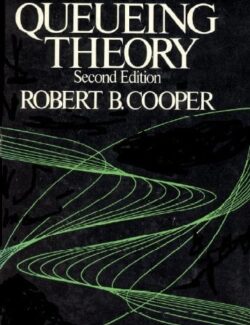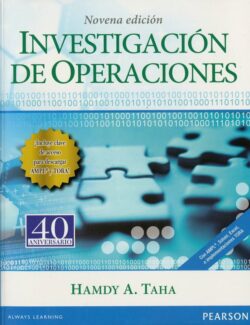Descripción
Cuando Jerry Lieberman y yo comenzamos a trabajar en la primera edición de este libro hace 50 años, nuestro objetivo era desarrollar un libro de texto innovador que ayudara a establecer la dirección futura de la educación en lo que entonces era el campo emergente de la investigación de operaciones.
Después de la publicación, no estaba claro qué tan bien se cumplió con este objetivo en particular, pero lo que sí quedó claro fue que la demanda del libro era mucho mayor de lo que ninguno de los dos tenía interés. Ninguno de los dos podría haber imaginado que esta extensa demanda mundial continuaría a un nivel tan alto durante un período de tiempo tan prolongado.
Ver más













Déjanos un comentario
5 comentarios